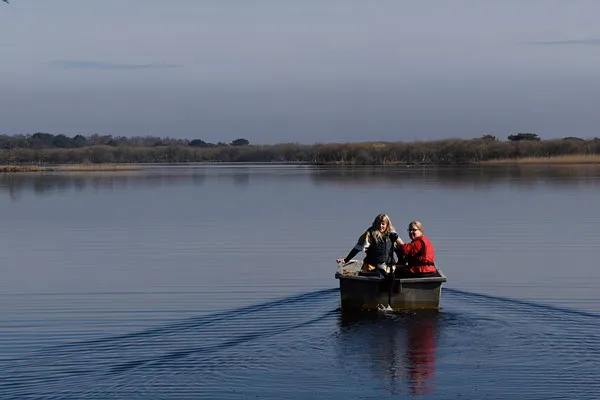Michelle Brown, the National Trust’s Ecological Officer for Purbeck, writes about the inspiration behind this ground breaking project.
Cyril Diver isn’t another wetland bird that you’ve never seen. He’s Britain’s greatest forgotten naturalist.
A career civil servant who pioneered legislation that established wildlife protections, Captain Cyril Diver would later become the first chief of the Nature Conservancy.
In the 1930s Diver and a team of volunteers surveyed the Studland peninsula, following fears that this great Dorset heathland would disappear beneath new houses.
The records lay undisturbed until four years ago, when they were donated to the National Trust. The Trust now owns and manages much of Studland.
Three years ago we embarked on an ambitious attempt to repeat Diver’s survey work on the South Haven Peninsula.
South Haven Peninsula is an iconic wildlife site and popular visitor attraction, bordered by Poole Harbour to the west and Studland Bay to the east.

Diver’s studies focussed on the peninsula itself: 350 hectares of diverse habitats, from sand dunes and heathland to wet woodland, mires and an internationally important lake known as Little Sea.
In the 1930s Diver found around 2500 species here.
Since 2013 more than two hundred volunteers have dedicated a total of 3,500 days to repeating Diver’s study. With local volunteers, Bournemouth University students and local conservation organisations we’ve recorded almost 3,800 species.
Over the last eighty years the changes to this landscape have been dramatic.
Natural succession, coastal erosion, rising sea levels and reductions in traditional farming practices such as livestock grazing on the heathland have turned dune grassland to dune heath, dune heath to scrub, and marsh to wet woodland.
What in Diver’s day was an open and virtually treeless landscape has become more enclosed and scrub-dominated, benefitting species such as Dartford warbler, smooth snake and nightjar, and reducing bare ground habitats upon which sand lizards and Purbeck mason wasps depend.
New habitats like a new sand dune ridge have been created from sand deposited along the eastern shoreline.
Invasive non-native species have threatened other habitats; like the heath star moss which has carpeted the bare sandy heathland microhabitats on which the heath tiger beetle and solitary bees depend.
Now coming to an end, the Cyril Diver Project has already helped inform how the estate is managed by National Trust rangers.
The end of the project marks the beginning of a much bigger effort to survey the ecology of the wider Purbeck Estate with help from the Cyril Diver project volunteers; a fitting legacy to a wildlife pioneer.
The full findings from the three year Cyril Diver project will be released later this month. Find out more about the National Trust’s Studland peninsula at https://www.nationaltrust.org.uk/studland-bay.
